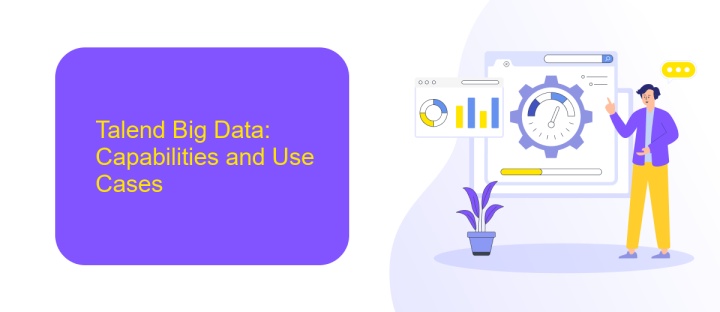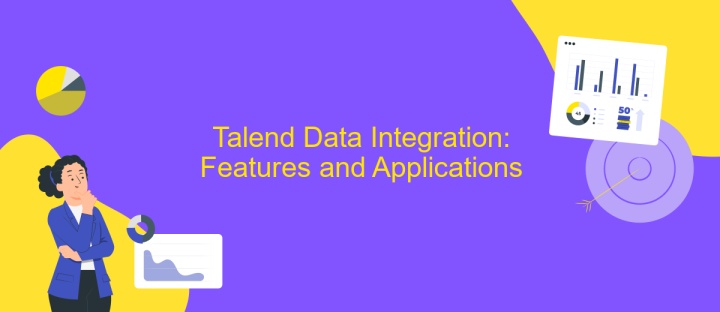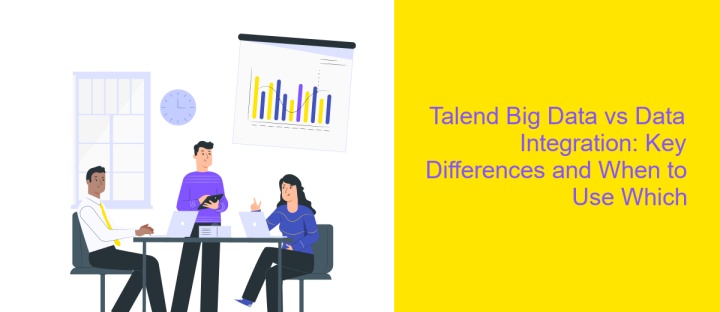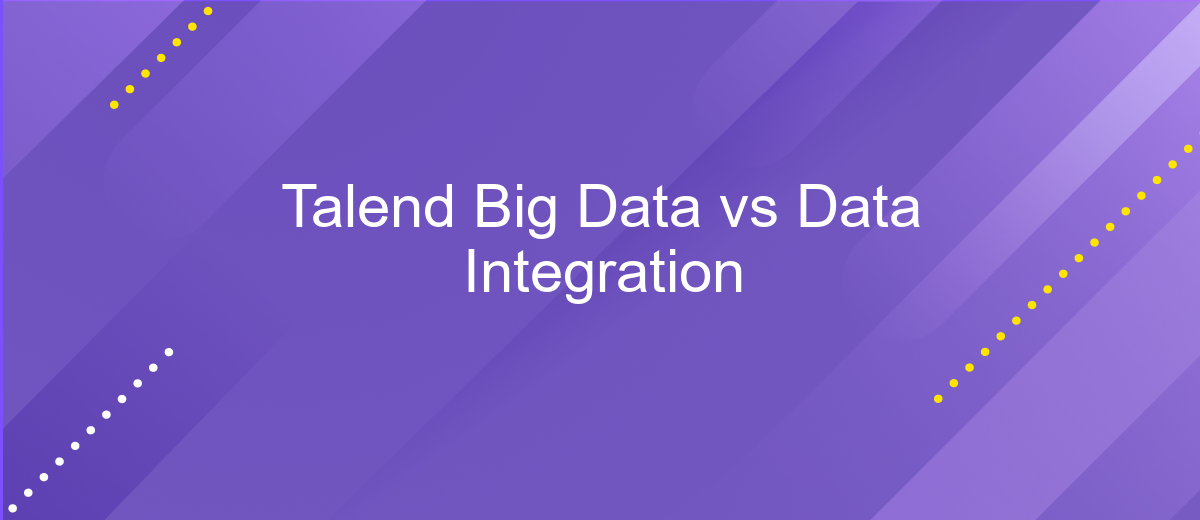Talend Big Data vs Data Integration
In today's data-driven world, effectively managing and integrating vast amounts of information is crucial for business success. Talend, a leader in data integration and big data solutions, offers powerful tools to streamline these processes. This article explores the key differences and advantages of Talend's Big Data and Data Integration platforms, helping organizations choose the right solution to enhance their data management strategies and drive innovation.
Introduction: Defining Big Data and Data Integration
In today's data-driven world, understanding the concepts of Big Data and Data Integration is crucial for businesses aiming to leverage their data assets effectively. Big Data refers to the vast volumes of structured and unstructured data generated at high velocity from a variety of sources. It requires advanced processing techniques to extract valuable insights. On the other hand, Data Integration involves combining data from different sources to provide a unified view, facilitating better analysis and decision-making.
- Big Data encompasses massive data sets that traditional data processing tools cannot handle efficiently.
- Data Integration ensures seamless data flow across systems, enhancing data accessibility and consistency.
- Both concepts are pivotal in transforming raw data into actionable intelligence.
As organizations continue to accumulate data at an unprecedented rate, the synergy between Big Data and Data Integration becomes increasingly important. By effectively integrating diverse data sources, businesses can unlock comprehensive insights, driving innovation and competitive advantage. Understanding and implementing these concepts is essential for any enterprise seeking to thrive in the digital age, where data is a key asset.
Talend Big Data: Capabilities and Use Cases

Talend Big Data offers a robust suite of capabilities designed to facilitate the processing and integration of large volumes of data across diverse sources. With its open-source platform, Talend enables businesses to harness the power of big data technologies like Hadoop, Spark, and NoSQL databases. Its intuitive interface allows users to design data workflows with ease, leveraging drag-and-drop components that simplify complex tasks. This accessibility ensures that both technical and non-technical users can effectively manage and transform data, making it a versatile tool for data-driven decision-making.
In terms of use cases, Talend Big Data is instrumental in real-time analytics, data warehousing, and ETL processes. Companies can utilize Talend to streamline their data integration efforts, ensuring seamless connectivity between systems. For organizations seeking to enhance their integration capabilities, services like ApiX-Drive can complement Talend by automating data transfers and synchronizing applications with minimal manual intervention. This synergy between Talend and integration services empowers businesses to optimize their data workflows, enhance operational efficiency, and drive innovation across various sectors.
Talend Data Integration: Features and Applications

Talend Data Integration is a robust platform designed to streamline data management and enhance data-driven decision-making. It offers a comprehensive suite of tools that facilitate the extraction, transformation, and loading (ETL) of data from diverse sources. With its user-friendly interface and open-source architecture, Talend ensures seamless integration of data across various platforms, making it an ideal choice for businesses aiming to optimize their data workflows.
- Scalability: Talend supports scalable solutions, accommodating growing data volumes and complex integration needs.
- Real-Time Processing: It enables real-time data processing, ensuring timely and accurate data insights.
- Extensive Connectivity: The platform offers extensive connectivity options, supporting a wide range of databases and applications.
- Cloud Integration: Talend provides seamless integration with cloud services, enhancing data accessibility and collaboration.
- Data Quality Tools: It includes built-in data quality tools to ensure data accuracy and consistency.
The versatility of Talend Data Integration makes it applicable across various industries, from finance and healthcare to retail and telecommunications. By facilitating efficient data integration, it empowers organizations to harness the full potential of their data assets, driving innovation and competitive advantage.
Talend Big Data vs Data Integration: Key Differences and When to Use Which

Talend offers robust solutions for both Big Data and Data Integration, each catering to specific needs within data management. While Talend Big Data focuses on handling vast amounts of data across distributed systems, its Data Integration counterpart excels in streamlining data workflows and ensuring seamless connectivity between diverse data sources.
The primary difference lies in their core functionalities. Talend Big Data is designed to work with large-scale data processing frameworks like Hadoop and Spark, enabling businesses to perform complex data analytics efficiently. In contrast, Talend Data Integration provides tools for ETL (Extract, Transform, Load) processes, making it ideal for consolidating data from various sources into a unified view.
- Talend Big Data: Best for large-scale data processing and analytics.
- Talend Data Integration: Suited for ETL processes and data consolidation.
- Big Data: Integrates with Hadoop, Spark, and NoSQL databases.
- Data Integration: Supports traditional databases and cloud services.
Choose Talend Big Data when dealing with extensive datasets requiring advanced analytics. Opt for Talend Data Integration when the goal is to streamline data workflows and ensure efficient data movement across systems. Understanding these distinctions helps in selecting the right tool for your specific data challenges.


Conclusion: Choosing the Right Talend Solution for Your Needs
When deciding between Talend Big Data and Talend Data Integration, understanding your specific business needs is crucial. Talend Big Data offers robust capabilities for handling large-scale data processing and analytics, making it ideal for organizations dealing with massive data sets and requiring advanced analytics. Its ability to integrate with Hadoop and other big data technologies ensures efficient processing and scalability. On the other hand, Talend Data Integration is a versatile solution suitable for businesses focused on streamlining data workflows and ensuring seamless data movement across various systems. It provides comprehensive tools for data transformation, cleansing, and integration, making it perfect for organizations prioritizing data quality and accessibility.
For businesses looking for additional integration capabilities, leveraging services like ApiX-Drive can further enhance the effectiveness of Talend solutions. ApiX-Drive automates the integration process, allowing for easy connection between different applications without extensive coding, thus saving time and resources. Ultimately, the choice between Talend Big Data and Data Integration should align with your organization's data strategy, existing infrastructure, and future growth plans. Carefully assessing these factors will ensure you select the Talend solution that best meets your operational and strategic objectives.
FAQ
What is the primary difference between Talend Big Data and Talend Data Integration?
Can Talend Big Data be used for real-time data processing?
What are the benefits of using Talend for data integration?
How can businesses automate their data integration processes effectively?
Is Talend suitable for small businesses or only for large enterprises?
Apix-Drive will help optimize business processes, save you from a lot of routine tasks and unnecessary costs for automation, attracting additional specialists. Try setting up a free test connection with ApiX-Drive and see for yourself. Now you have to think about where to invest the freed time and money!

